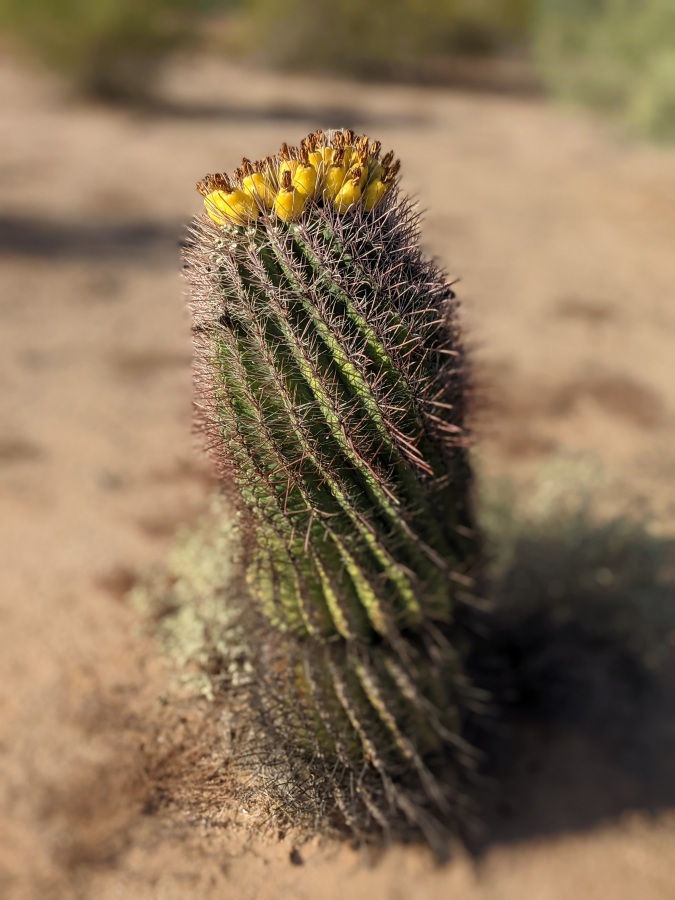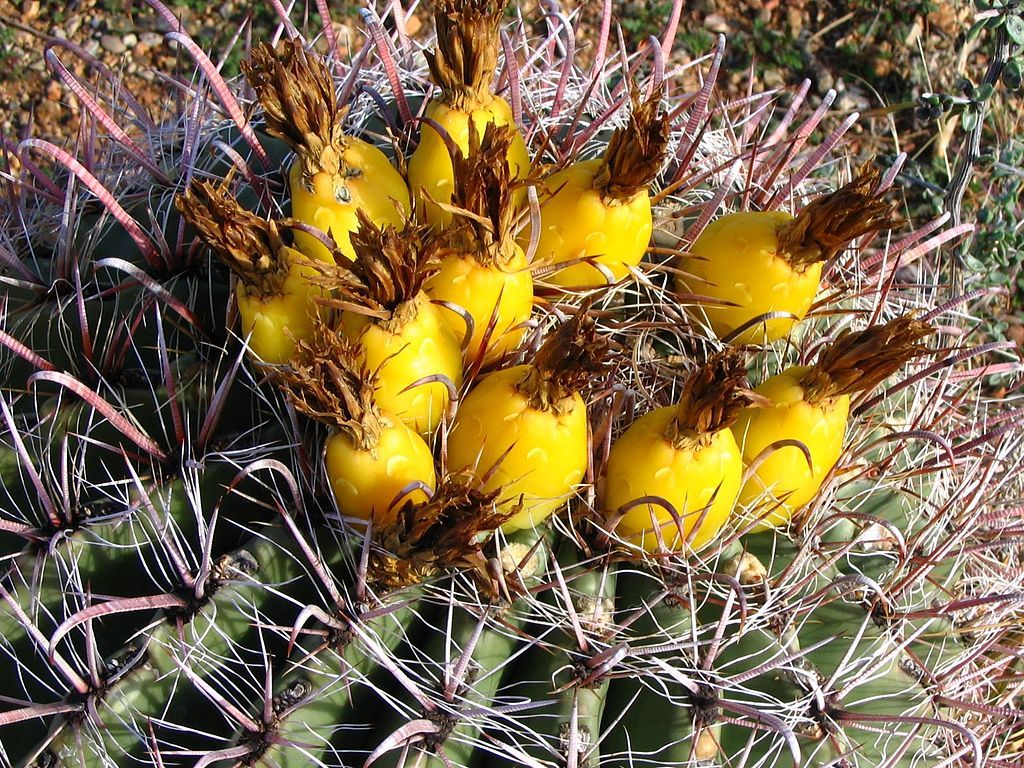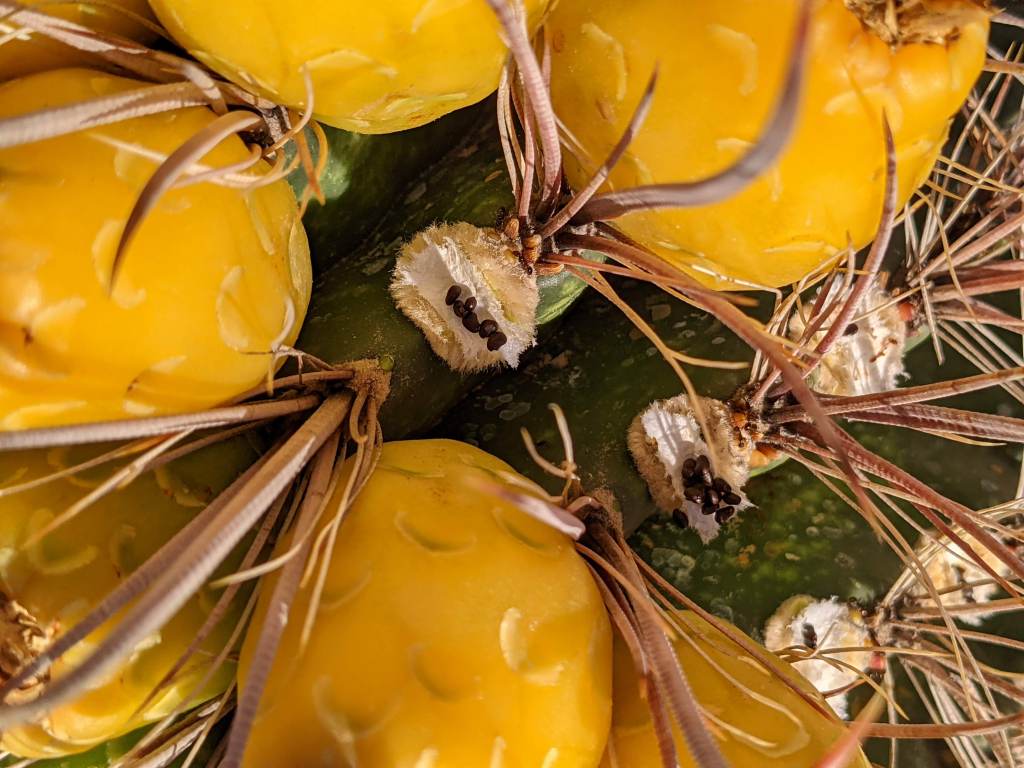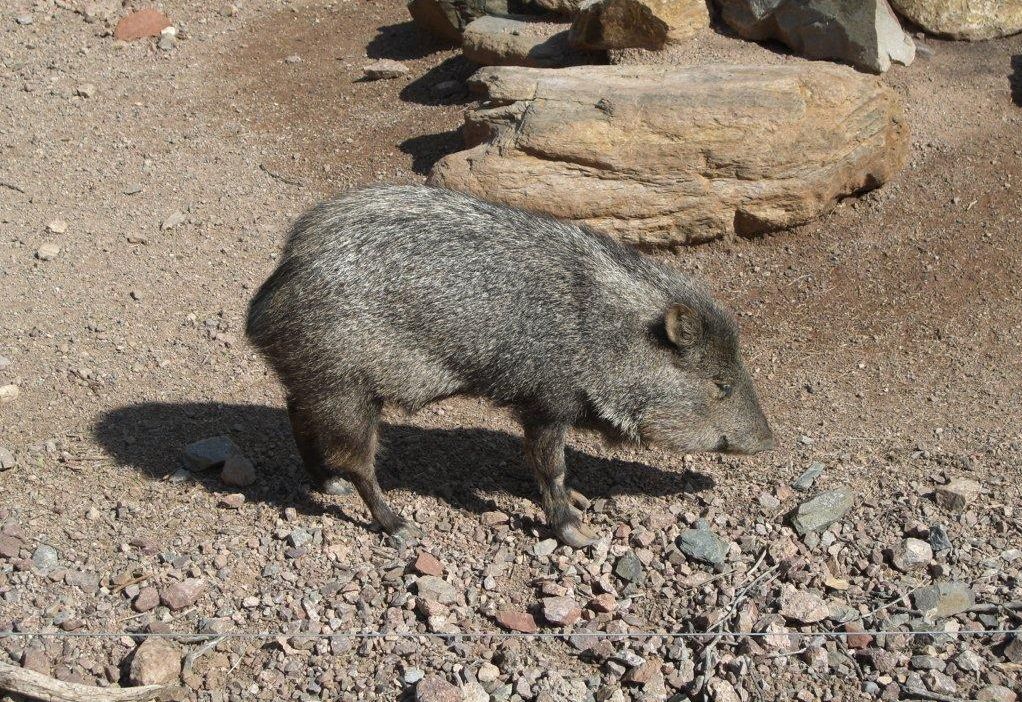
1 November 2021
Most intriguing on my daily walks last week in Phoenix were the barrel-shaped yellow fruits atop fishhook barrel cactus (Ferocactus wislizeni). I missed the flowering (click here to see) but the fruits may persist for more than a year after the flowers fade into dried brown tufts on top of the fruits.

A closer look shows a few seeds remaining where each fruit broke off.

There were no fruits on the ground near this specimen at Reach 11 Recreation Area, probably because the park has so many javelinas. I saw the footprints of these peccaries (not pigs) but didn’t see any of the animals. Here’s what one looks like in a photo from Wikimedia Commons.

Javelinas and squirrels eat the lemony-flavored fruits and some websites say we can eat them too, but sparingly. The fruit is mucilaginous like okra. The cactus contains oxalic acid, a poison that causes nausea and diarrhea in low doses and death in high doses …
… which might explain the other evidence left behind by the javelinas. Were the javelinas sick to their stomachs?
“That meal was great,” said the javelinas, “but I feel a little whuugh.”
(photos from Kate St. John and Wikimedia Commons)